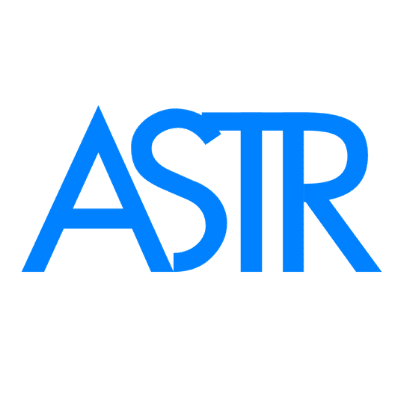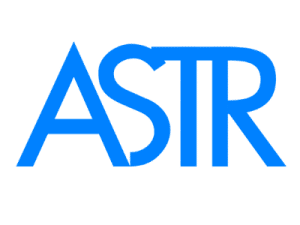Stop Foot Pain Naturally: Symptoms, Causes, Consequences, Healing Cycle & Treatment
Stop Foot Pain Naturally: Symptoms, Causes, Consequences, Healing Cycle & Treatment
What is foot pain?
Approximately 17-42% of adults experience foot pain, which is disabling in nature in about half of these cases. This can occur following perceived damage to bones, joints, ligaments, and other tissue distal to the fibula and tibia. Tissue damage can be associated with thermal, chemical, or mechanical stimulation, which can be related to systemic pathology, direct trauma, infection, or musculoskeletal overload. [1] The following sections discuss the causes and risk factors of foot pain, the role of the normal healing cycle, chronic wound healing, and therapeutic measures to effectively alleviate foot pain.
Causes and Risk Factors of Foot Pain
The causes and risk factors of foot pain are enlisted below. [1]
- Bad shoes
- Ankle sprain
- Gait abnormalities
- Achilles tendonitis
- Fascite plantare
- Excessive pronation of the foot
- Heel spur
- Borsite
- Artrite reumatoide
- Gotta
- Neuropatia periferica
- Genere maschile
- Sports including running, jumping, and tennis
- Running in worn-out shoes
- Tight calf muscles
- Bone spur
- Diseases including psoriasis and high blood pressure
- Medications including fluoroquinolones and other antibiotics
Consequences of Foot Pain
Foot pain has varying consequences related to the mental function, physical function, and social life of affected individuals. Concerning social life, foot pain may cause failure to pursue hobbies, reduces social functioning, and contribute to school absenteeism. Foot reduces the quality of life, causes sleep disturbances, increases the use of analgesic drugs, and also increases interpersonal strain and depression. In the context of physical functioning, foot pain elicits fear of re-injury upon movement, resulting in reduced physical activity. [1]
Ciclo di guarigione normale
The normal healing of a wound is a biological phenomenon occurring in the human body. The phases of wound healing comprise hemostasis, inflammation, proliferation, and maturation, also known as remodeling. In order to achieve optimal wound healing, the phase mentioned above must progress in a sequential manner and within a proper time duration. Following is a detailed description of different phases of wound healing including relevant physiological and cellular events that occur during the normal healing cycle. [2]
| Stage | Descrizione |
Hemostasis |
During the hemostasis phase of wound healing, the vessels supplying to the wound area constrict. The platelets aggregate together, followed by the formation of fibrin from fibrinogen. This promotes the development of a thrombus, simply known as a blot cot. |
Infiammazione |
Hemostasis is followed by the inflammatory stage of the normal healing cycle. During this phase, the inflammatory cells infiltrate the site of injury. These cells include neutrophils, lymphocytes, and monocytes. Tissue macrophages arise from monocytes. Loss of function, pain, increased temperature, and redness are the cardinal signs of this phase of the wound healing cycle. |
Proliferazione |
This is the third phase of the normal wound-healing process. During the proliferation stage, the wound exhibits the formation of new blood vessels, also known as angiogenesis. Other processes involved in this phase of the wound-healing cycle include the re-epithelization of the wound region, the production of collagen, and the formation of the extracellular matrix in the injured area. The proliferation stage is also marked by the formation of trigger points, scar tissue, muscle spasms, and fascia restrictions. |
Maturazione |
This stage of the wound healing cycle, also known as remodeling, denotes the last stage of the cycle. During the maturation phase, the collagen undergoes remodeling along with the maturation and regression of the blood vessels. |
Healing Cycle in Chronic Conditions
In chronic conditions, the wound healing cycle is characterized by substantial derangement with a lack of sequential and timely progression of each stage of the wound healing cycle. In chronic conditions, the wound takes more than 12 weeks to heal. Increased inflammation and oxidative stress in wounds subjected to chronic healing, cause senescent cell induction. The persistent oscillation between the inflammation and proliferation stages of the healing cycle and the failure to reach the maturation stage is the hallmark of chronic wound healing. [3]
Ineffective Treatment for foot pain
Following is an array of therapeutic measures that are commonly used by the general population, athletes, and even health practitioners to alleviate foot pain.
- Application of heat and ice
- Electrical stimulation of the site of foot pain
- Use of foam roller and massaging on the site of foot pain or injury
- Stretching of the foot
- Mobilization of the foot
- Strength exercises during the inflammatory phase of the wound healing cycle
Effective Treatment Measures
In the given table are effective therapeutic measures that are scientifically proven to alleviate pain and resolve the aberrant wound healing cycle, targeting foot pain and providing relief.
| Trattamento | Descrizione |
Normal gait |
|
Good shoes |
|
Correct foot pronation |
|
Resolution of inflammation stage of the wound healing cycle |
|
Resolution of the proliferation stage of the wound healing cycle |
|
Conclusione
Foot pain is a disabling and debilitating pathology that affects a substantial proportion of the adult population. Foot pain may emerge from systemic disease or may be a consequence of poor daily habits such as abnormal gait and wearing worn-out shoes. To resolve the aberrant wound healing cycle in chronic foot pain, one shall consume an anti-inflammatory diet and supplements, along with the appropriate use of ASTR Tools for releasing scar tissue, fascia restrictions, and muscle trigger points.
Riferimenti
- Hawke, F., & Burns, J. (2009). Understanding the nature and mechanism of foot pain. Journal of foot and ankle research, 2, 1. https://doi.org/10.1186/1757-1146-2-1
- Guo, S., & Dipietro, L. A. (2010). Factors affecting wound healing. Journal of dental research, 89(3), 219–229. https://doi.org/10.1177/0022034509359125
- Hubbard, T. J., & Wikstrom, E. A. (2010). Ankle sprain: pathophysiology, predisposing factors, and management strategies. Open access journal of sports medicine, 1, 115–122. https://doi.org/10.2147/oajsm.s9060
- Henry, S. L., Concannon, M. J., & Yee, G. J. (2008). The effect of magnetic fields on wound healing: experimental study and review of the literature. Eplasty, 8, e40.

